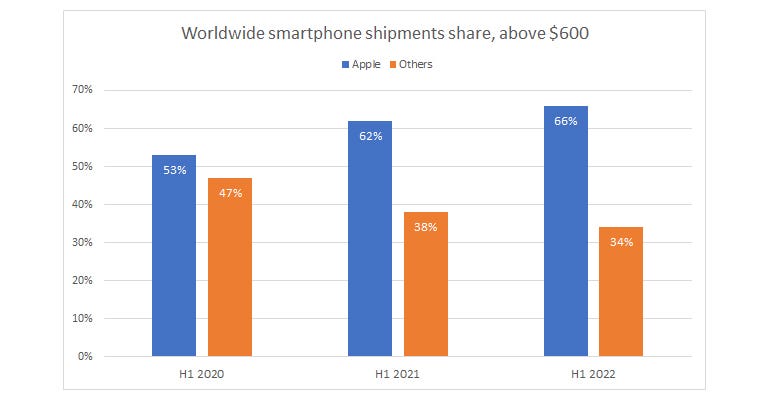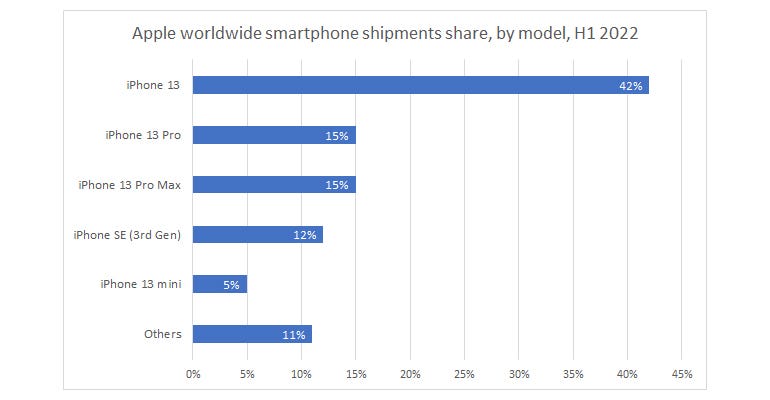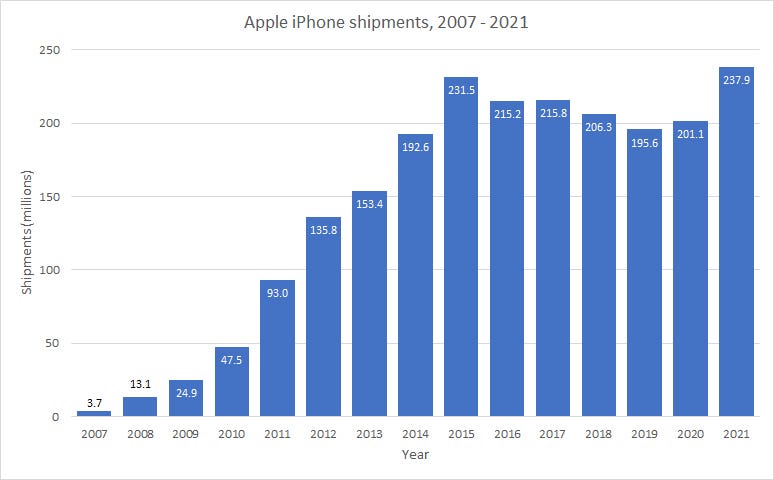This week, Apple introduced the new iPhone 14 (and its variants, the iPhone 14 Plus, 14 Pro, and 14 Pro Max).
While many are focused on new features, it’s also interesting to see how the iPhone 14 lineup fits into Apple’s overall strategy, which is clear from some data.
At present, it seems that Apple’s strategy of focusing on the high end of the smartphone market continues to work: according to data from technology analysts Canalys, Apple has extended its dominance of the high end market these last years.

Data: Canalys / Graphic: ZDNET.
“The demand for high-end smartphones has increased in recent years as Apple continues to increase its dominance in the segment. Despite the headwinds in the economy and the overall decline in smartphone demand, demand for high-end smartphones is expected to remain strong,” said Le Xuan Chiew, research analyst at Canalys.
Technology analyst firm Counterpoint has a similar view: as 5G becomes more widespread, consumers are changing their devices and as a result, Apple has managed to grab over 78% of the 1,000 smartphone segment. euros and more, and 57% of the market for smartphones that cost more than 400 euros.
“Customers whose finances were unaffected by the pandemic used the extra disposable income created due to the travel restriction to purchase more expensive devices, including smartphones,” said Varun Mishra, principal analyst at Counterpoint.
It’s also interesting to see which Apple devices people buy: the standard iPhone 13 model drives the majority of sales, according to the chart below. Note the position of the iPhone 13 Mini – some have suggested that this relatively poor performance is one of the reasons we won’t see a new model like this anytime soon.

Data: Canalys / Graphic: ZDNET.
More broadly, the iPhone ecosystem is still on the rise. Last year saw the highest number of iPhones shipped yet, as the graph below shows – and the iPhone now accounts for more than half of all smartphones in use in the United States.
Some of them may be quite old models, but Apple’s policy of supporting phones longer than many of its rivals allows it to build up a large user base, which it can then target with new products (like the Apple Watch) and services like Apple Pay.

Data: Counterpoint / Chart: ZDNET.
But it’s not just about the iPhone. Again, Apple extended its lead in the smartwatch market, shipping 16 million units in the first half of last year, but 18 million units in the first half of this year, and increasing its market share. from 51% to 52%, according to Canalys.
This all goes to show just how powerful Apple’s position in the market is, and with the smartphone market as mature as it is, it’s hard to see that picture changing in the near future.
Source: ZDNet.com
